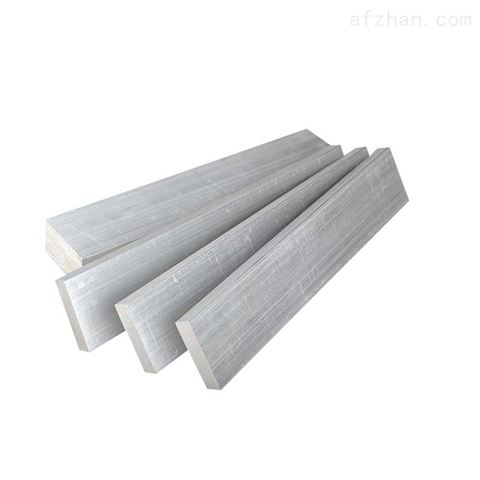Our Location
The 6082 aluminum alloy belongs to the 6000 series of aluminum alloys. It is a medium-strength alloy with key alloying elements of silicon, magnesium, and manganese. This alloy can be anodized and heat treated and has good corrosion resistance. It is mainly used for structural applications in various structural sections such as hollow tubes, angle irons, and extrusions. 6082 aluminum has good weldability and machinability, but heating during the welding process can weaken it in a zone near the weld.

Table of Contents
Toggle| Element | % Composition |
| Si | 0.7-1.3 |
| Fe | 0.0-0.5 |
| Cu | 0.0-0.1 |
| Mn | 0.4-1.0 |
| Mg | 0.6-1.2 |
| Zn | 0.0-0.2 |
| Ti | 0.0-0.1 |
| Cr | 0.0-0.25 |
| Al | Balance |
The 6082 aluminum has good formability, which makes it a popular choice for structural applications. It is classified as a medium-strength alloy, easily anodized, suitable for CNC machining, and offers excellent corrosion resistance. Thanks to its tightly adherent oxide layer, it can resist seawater spray and immersion. However, the 5000 series aluminum is better for the seawater industry due to its higher magnesium content. Regarding the 6000 series aluminum alloys, 6082 aluminum is the strongest, especially when heat treated.

| Temper Grade | 6082 Soft 0 | 6082-T4 | 6082-T6 | 6082-T651 |
| Temper Description | Untempered | Solution heat treatment and naturally aged | Solution heat treatment and artificial aging | Like T6 but is also stress relieved by stretching |
| Hardness (Vickers) | 35 | 65 | 95 | 90 |
| Density (kg/m3) | 2700 | 2700 | 2700 | 2700 |
| Tensile Strength (Yield) (MPa) | 60 | 110 | 250-260 | 240 |
| Tensile Strength (Ultimate) (MPa) | 130 | 205 | 290-310 | 275 |
| Elongation at Break (%) | 27 | 14 | 10 | 6-9. |
| Shear Strength (MPa) | 85 | 126 | Not Listed | Not Listed |
| Melting Point (°C) | 585 – 650 | 585 – 650 | 585 – 650 | 585 – 650 |
| Specific Heat Capacity (J/kg⋅K) | 896 | 896 | 896 | 896 |
| Modulus of Elasticity (GPa) | 70 | 70 | 70 | 70 |
| Thermal Conductivity (W/mK⋅) | 150 – 170 | 150 – 170 | 150 – 170 | 150 – 170 |
| Coefficient of Thermal Expansion (10-6/K) | 23.4 | 23.4 | 23.4 | 23.4 |
The field of application in aviation is fixed installations, trucks, tower buildings, ships, pipelines, and other buildings that require strength, weldability, and corrosion resistance. For example, aircraft parts, camera lenses, couplers, ship accessories and hardware, electronic accessories and connectors, decorative or various hardware, hinge heads, magnetic heads, brake pistons, hydraulic pistons, electrical accessories, valves, and valve parts.

Aluminum grades are classified using a four-digit number. The first digit defines the primary alloying element. The second digit indicates any modifications made to the alloy, while the last two digits are arbitrary identification numbers within the series.
– 1XXX: 99% Pure Aluminum with some impurities.
– 2XXX: Copper (0.7 to 6.8%) is the primary alloying element.
– 3XXX: Manganese (0.05 to 1.8%) is the primary alloying element.
– 4XXX: Silicon (0.6 to 21.5%) is the primary alloying element.
– 5XXX: Magnesium (0.2 to 6.2%) is the primary alloying element.
– 6XXX: Silicon (0.7 to 1.3%) and Magnesium (0.4 to 1%) are the primary alloying elements.
– 7XXX: Zinc (0.8 to 12%) is the primary alloying element.
– 8XXX: The 8000 series is made of tin, copper, and nickel alloy. It has low strength but high machinability and wear resistance.
To determine the aluminum grade, check for a heat number marked on the material and inspect the relevant mill test certificate. The certificate should state the material composition, heat treatment, and properties. Alternatively, you can use a Positive Material Identification (PMI) instrument, such as a handheld x-ray fluorescence scanner, to break down all the alloying elements and their percentages. Note that this type of test won’t provide any information on the heat treatment. Lastly, you can send samples to a lab for mechanical testing.
The 6082 alloy contains refractory metal Mn, making it necessary to control the melting temperature between 740-760 ℃. Before sampling:
Once the melt is transferred to a static furnace, use nitrogen and a refining agent for powder spraying and jet refining. The refining temperature should be between 735-745 ℃, and the refining time should be 15 minutes. After refining, let it stand for 30 minutes. This process helps in degassing, slag removal, and purification of the melt. During melting and casting, two filtering devices exist between the mold and the furnace mouth. The furnace mouth is filtered by a foam ceramic filter plate (30PPI). Before casting, use 14 mesh glass fiber cloth for filtering to remove oxide and slag inclusion in the melt. The casting temperature of the 6082 alloy aluminum plate is relatively high (compared to the normal process of the 6063 aluminum plate). It is essential to strictly control the casting speed and water flow rate, as exceeding the range can lead to casting failure.

6082 aluminum can be welded, but the heat-affected zone may have lower strength. This effect can be minimized by using low heat-input welding. For successful welding of the 6082 aluminum plate, a welding rod with a low melting point is recommended. However, certain precautions should be taken during the welding process:
1. The welding flame should not be too long, and the 6082 aluminum plate should be heated in a microwave oven to avoid melting.
2. Place wet towels inside the inner container to ensure proper protection.
3. Due to the low melting point of the 6082 aluminum plate, it may deform during the second reheating. Therefore, the welding rod cannot be heated and dipped in welding powder.
4. After welding, wait two to three minutes for the nylon wire special slurry to cool down before it comes into contact with the pipe.
5. To ensure the quality of the welding points, the welding rods must be evenly coated with flux.

| Process | Performance |
| Working Ability – Cold | Excellent |
| Machining Ability | Excellent |
| Welding Ability – Gas | Excellent |
| Welding Ability – Arc | Excellent |
| Welding Ability – Resistance | Excellent |
| Brazing Ability | Excellent |
| Soldering Ability | Excellent |
When selecting aluminum, it is crucial to have a comprehensive understanding of the intended use. Some grades may have exceptional strength but lack the necessary corrosion resistance. Below are the different aluminum classifications, along with their standard features:
– Series 1000: A pure grade of aluminum usually used for electrical bus bars, chemical tanks, and heat exchangers. This alloy is not heat-treatable.
– Series 2000: It contains copper as the primary alloying element, which enhances strength and hardness. It is commonly used in the aerospace industry. This alloy can be heat treated.
– Series 3000: Manganese is its primary alloying element and is considered a general-purpose aluminum alloy. This alloy cannot be heat-treated.
– Series 4000: It contains silicon as the primary alloying element. It has low thermal expansion, high strength, and good corrosion resistance. Some alloys in this series can be heat-treated.
– Series 5000: This series contains manganese as the primary alloying element. Its main characteristic is its good corrosion resistance. It is wide applied in the marine industry. This alloy is not heat-treatable.
– Series 6000: It contains silicon, manganese, and magnesium as the primary alloying elements. It is classified as a structural series with medium strength. This alloy can be heat treated.
CN standard: 6082 GB/T 3190-1996
ISO: Al SiMgMn ISO 209.1-1989
Russian standard: AII35/1350 ROCT 4785-1974
EN: EN AW-6082/AlSiMgMn EN 573-3-1994
German standard: AlMgSi/3.2315 DIN1725.1-1986/W-Nr
French standard: 6082 (A-SGMO0.7) NF A50-411 NF A50-451
American Standard: 6082/A96082 AA/UN
The difference between aluminum 6061 and 6082 is small. They share over 99% of their composition, meaning grades 6061T6 and 6082T6 can be used interchangeably. Although aluminum grade 6082 is slightly harder than 6061, it is also more brittle.
The best aluminum alloy series for bending are 3xxx, 5xxx, and 6xxx. For instance, 6063 is a good choice, while 6082 is more challenging. It is advisable to avoid using alloys in the 2xxx family as they are extremely strong, making them difficult to form.
AL 6082 is commonly heat-treated to T6, which involves a solution heat treatment followed by artificial aging. Hot forging requires heating a workpiece to around 75% of its melting point.

